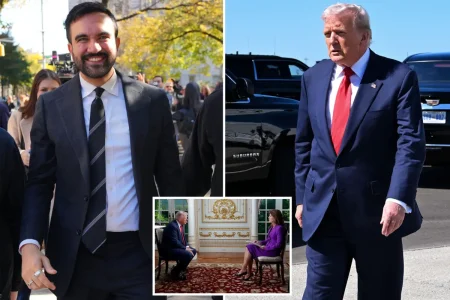A New Era in Middle East Peace
In a significant shift from traditional diplomatic efforts, a new approach to Middle Eastern peace is emerging under the Trump administration’s leadership. Working closely with allies across the Muslim world, American officials are striving to transform the fragile cease-fire between Israel and Hamas into something more substantial and enduring. This initiative represents a departure from previous peace processes, focusing on practical steps and regional cooperation rather than immediately tackling the most contentious issues that have historically derailed negotiations. The administration’s pragmatic approach acknowledges the complex realities on the ground while attempting to create conditions for stability that could eventually lead to more comprehensive discussions.
The current cease-fire, while still precarious, has opened a narrow window of opportunity that diplomats are eager to exploit. Both Israeli and Hamas officials have shown tentative willingness to maintain the pause in hostilities, recognizing the devastating toll that continued conflict would take on their respective populations. Muslim-majority nations in the region, many of which have historically maintained distance from such negotiations, are now playing increasingly active roles in supporting and facilitating discussions. This broader regional involvement suggests a growing consensus that stability in the Israeli-Palestinian conflict serves the interests of all parties in the Middle East, potentially creating a more sustainable foundation for peace than previous bilateral efforts.
Trump administration officials have adopted a multifaceted strategy, combining diplomatic pressure, economic incentives, and security guarantees to encourage cooperation from all sides. Rather than pushing immediately for final-status agreements on contentious issues like borders, refugees, and Jerusalem, the current approach focuses on improving living conditions for Palestinians while addressing Israel’s security concerns. This incremental method, though criticized by some as avoiding core issues, has allowed for modest progress where more ambitious peace plans have failed. The administration has also leveraged America’s strengthened relationships with key Arab states to create regional support structures that could help sustain agreements reached between the primary parties.
The involvement of Muslim-world allies represents a particularly noteworthy development in this peace process. Countries that once refused to engage directly with Israel are now participating in discussions and even offering economic assistance and diplomatic support. This evolving regional dynamic reflects both changing geopolitical realities and a pragmatic assessment that perpetual conflict serves no one’s interests. Religious and cultural leaders from across the Muslim world have also begun cautiously endorsing dialogue, providing important social legitimacy to political leaders engaged in these sensitive negotiations. While deep skepticism remains in many quarters, this broadened participation introduces new perspectives and potential pathways forward that weren’t available in previous peace initiatives.
Humanitarian concerns have become central to the current process, with immediate attention focused on alleviating the dire conditions faced by civilians caught in the conflict. International aid organizations report unprecedented cooperation from regional governments in facilitating assistance to affected populations, particularly in Gaza. This focus on human security and basic needs represents both a moral imperative and a strategic recognition that desperate populations are unlikely to support peace efforts. The administration has emphasized that improving daily life for Palestinians while ensuring security for Israelis creates the necessary foundation upon which more ambitious diplomatic goals can eventually be built, a perspective increasingly shared by regional partners who see extremism flourishing in environments of deprivation and hopelessness.
Despite cautious optimism surrounding these new approaches, significant challenges remain. Hardliners on all sides continue to view compromise as capitulation, and decades of failed peace efforts have created deep reservations about the possibility of meaningful progress. The cease-fire itself remains vulnerable to provocations from various factions that benefit from continued conflict. Nevertheless, the Trump administration’s willingness to pursue unconventional diplomatic pathways, combined with evolving attitudes among regional powers, has created possibilities that seemed unimaginable just months ago. As this new kind of peace process unfolds, its success will ultimately depend not just on high-level diplomatic agreements but on whether it can deliver tangible improvements in security and prosperity for the people whose lives have been shaped by this enduring conflict.











